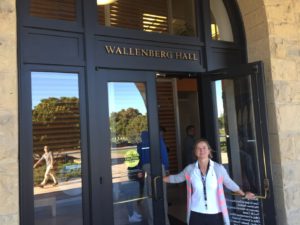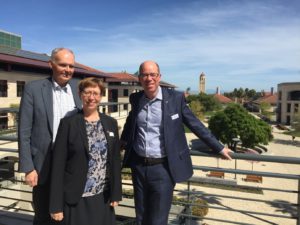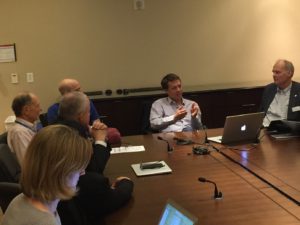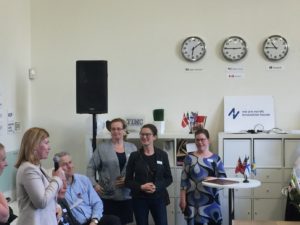Guest blogger: Mats Larhed, with the Vice-Chancellor in Stanford
Is the Disciplinary Domain of Medicine and Pharmacy on the right road? Now and then we need to ask ourselves this question, and one way to check is to study and visit world-leading universities, such as Stanford University, just south of San Francisco.
Stanford has enjoyed cooperation with the Knut and Alice Wallenberg Foundation for more than 20 years and has established a much-appreciated programme to support Swedish postdocs at Stanford.
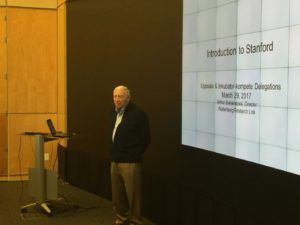
Professor Arthur Bienenstock talks about Stanford’s development and gives Uppsala University pointers for the road ahead.
In Uppsala and Sweden we have built up SciLifeLab Drug Discovery and Development to guide, support and facilitate pharmaceutical development in the academic sector. Stanford has also started several initiatives in this area and we therefore decided to meet two of the most notable examples, SPARK and ChEM-H, and learn more about how they work.
SPARK is a virtual organisation that has no labs of its own. Instead, SPARK focuses on supporting research teams that are seeking to develop new drugs, new drug therapies and new diagnostic methods by educating, identifying potential partners, offering advice from experienced people in industry and providing hypereffective project management. We were particularly impressed by the regular seminars they arrange on ongoing projects for all researchers at Stanford to spread knowledge about the development of pharmaceuticals, which can often be a long and winding road.
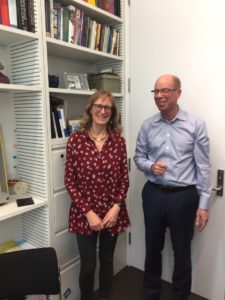
Professor Nancy Anne Federspiel of Stanford SPARK Translational Research Program and Mats agree entirely about how academia can help in new drug development.
ChEM-H (Chemistry, Enginering & Medicine for Human Health) had a quite different, very ambitious interdisciplinary design. Here, a bunch of medicinal chemists are working on future health challenges with a number of specially recruited professors and selected doctoral students. We were amazed after just 5 minutes, began to pinch ourselves to make sure we weren’t dreaming when they showed us the plans for their new 5-storey Yin and Yang-shaped building, and nearly fainted when we saw the building site outside and realised the plans were serious. ChEM-H has a lot to teach us about how clinical researchers can work with pre-clinicians and engineers in patient-oriented projects that cut across department and faculty lines. No question about the right road here.
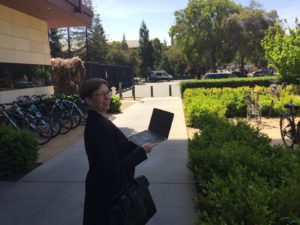
Stanford’s Campus is big. Eva shows the Medicine and Pharmacy delegation the way to the next meeting.
Professor Bob Harrington, Professor Erik Ingelsson and their colleagues at the Department of Medicine were interested in working with Uppsala University. Linking up our quality registers and biobanks with Stanford’s strengths in large data set analysis and methods development feels absolutely like the right way to go. As does starting up an Uppsala–Stanford Fellows Program and exchanging visiting researchers as soon as possible. Perhaps we can invite the Knut and Alice Wallenberg Foundation to take part?
The final stop on the road was Nordic Innovation House for a concluding discussion on “Innovation – The love child of structure and serendipity?” at which Stanford’s former President Professor Gerhard Casper, who has an honorary doctorate from Uppsala University, was a guest participant.
After today’s reality check, we feel quite convinced that Medicine and Pharmacy’s GPS is set on the right road. So let’s keep going on the highway – but let’s not forget to turn aside now and then to explore the byways.
Mats Larhed

